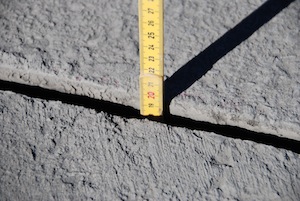
Measuring the benefit.
The idea behind open trench and shadow conduit policies is that you can minimise damage to roads and maximise the future benefit of fiber by doing everything at once, rather than tearing up pavement whenever a project comes along. Even if you don’t need the conduit right away, the small marginal cost of putting conduit into an open trench could be offset just by the money saved on road maintenance.
A rule of thumb is that cutting into a street reduces its remaining lifespan by 10%. With the details of a particular project, a civil engineer can turn that into a dollar amount, but given that road projects routinely run into the seven and eight figure range, a little bit of eventual fiber can pay for miles of idle conduit.
The lifespan clock more or less re-sets after a street is resurfaced, which is why you sometimes see underground work being done immediately prior. One idea that’s been kicked around is to routinely use microtrenching techniques to install fiber just ahead of scheduled re-surfacing. It becomes a little more complicated with fiber that shallow – typically the old surface is ground down some – but it’s manageable if you know where the fiber is. And have a splicing crew on hot standby.
Even so, microtrenching is expensive compared to empty conduit. But when road resurfacing happens on a predictable timetable, there’s an opportunity to plan ahead and see if there’s a business case that can be made for prospectively installing fiber on a case by case basis.
